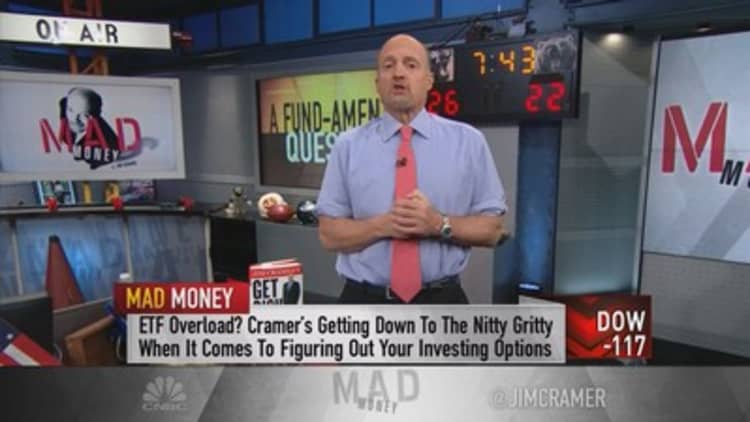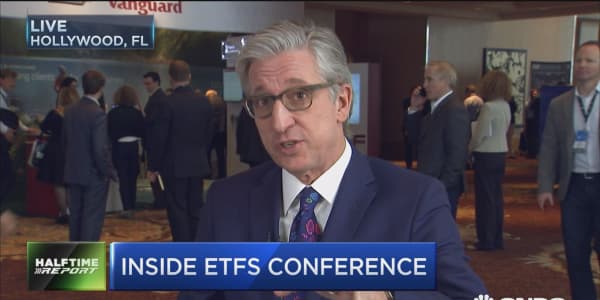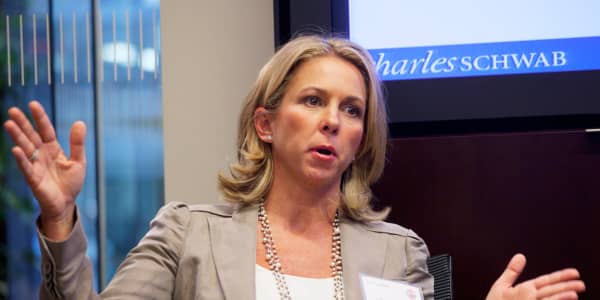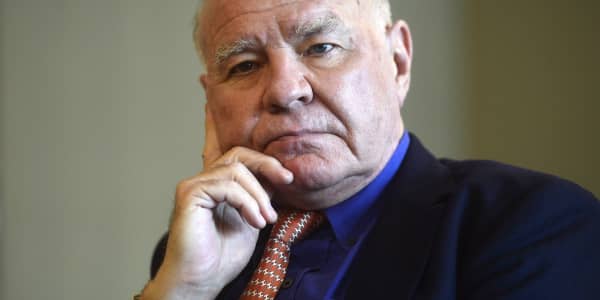The growing exchange-traded fund space has endured a rocky stretch this year along with broader markets. But experts stress that, as ETF providers and investors adapt to new market dynamics, the segment can prove as effective as it did during the largely uninterrupted bull run in recent years.
ETFs saw nearly $250 billion in net inflows last year as assets under management topped $2 trillion. But amid widespread selling this year, ETFs have seen net outflows of $7.87 billion and assets have fallen by 8.2 percent, according to XTF ETF Experts.
As a changing market, including lower oil prices and the start of a Federal Reserve tightening cycle, cloud investor outlook, pros tout the funds as tools to diversify and protect portfolios. At the same time, the industry is fighting the perception that its products may have worsened recent market swings.
ETF players will discuss those issues and more starting Sunday at the ETF.com Inside ETFs Conference in Florida.
"The outflows aren't because people are concerned about the structure of the ETF. They're because people are leaving the market," said Kris Monaco, head of ISE ETF Ventures, which designs and helps to launch exchange-traded products. "There are ETFs that can hedge your exposure and decrease volatility, and people aren't taking advantage of all those tools,"
Some of the most popular ETFs include the SPDR S&P 500 Trust ETF, down nearly 7 percent this year, and the technology-heavy PowerShares QQQ Trust, which has fallen almost 8 percent. The funds respectively track the S&P 500 large-cap stock index and the Nasdaq tech index. Ease of entry and lower fees led many investors to the segment in recent years instead of the still-larger mutual fund space.
But the ETF industry is now dealing with investors shying away this year amid choppy trading and a roughly 7 percent slide for the . A battered oil market and weakening junk bond space have also punished funds invested in those sectors.
But Tom Lydon of ETF Trends noted that the industry continues to diversify, and investors have avenues to play current trends. He highlighted some funds that bet against oil or China, or others that are tailored to a rising interest rate environment, adding that some investors are buying into wider index funds on weakness. In fact, the S&P Trust ETF has seen the second-highest inflows among ETFs this month, according to XTF.
"The ETF ecosystem is just a segment of the overall marketplace these days," Lydon said. "You're going to see the same ebbs and flows that you have in stocks and mutual funds. Shrewd investors are seeing opportunities in these corrections and hedging their bets with short-term allocations,"
ETFs may become more appealing during periods of dim outlook because of their ease of entry and exit, said Scott Clemons, managing director for private wealth management at Brown Brothers Harriman. The simplicity of trading may have exacerbated the outflows this year, he said.
"The beauty of being able to sell ETFs, as opposed to mutual funds, at a lower cost increases their appeal and liquidity. It increases the ability to act on volatility," he said.

Clemons argued that ETFs should continue to see inflows for the year as fears about global growth and energy start to subside.
Still, the industry has to deal with questions about how it contributes to market volatility. For example, openings for some ETFs were delayed and trading was halted in others last Aug. 24, when the Dow Jones industrial average fell more than 1,000 points in the first few minutes of trade.
But Monaco of ISE ETF Ventures argued that the funds could "accentuate existing issues" with market structure rather than create them.






